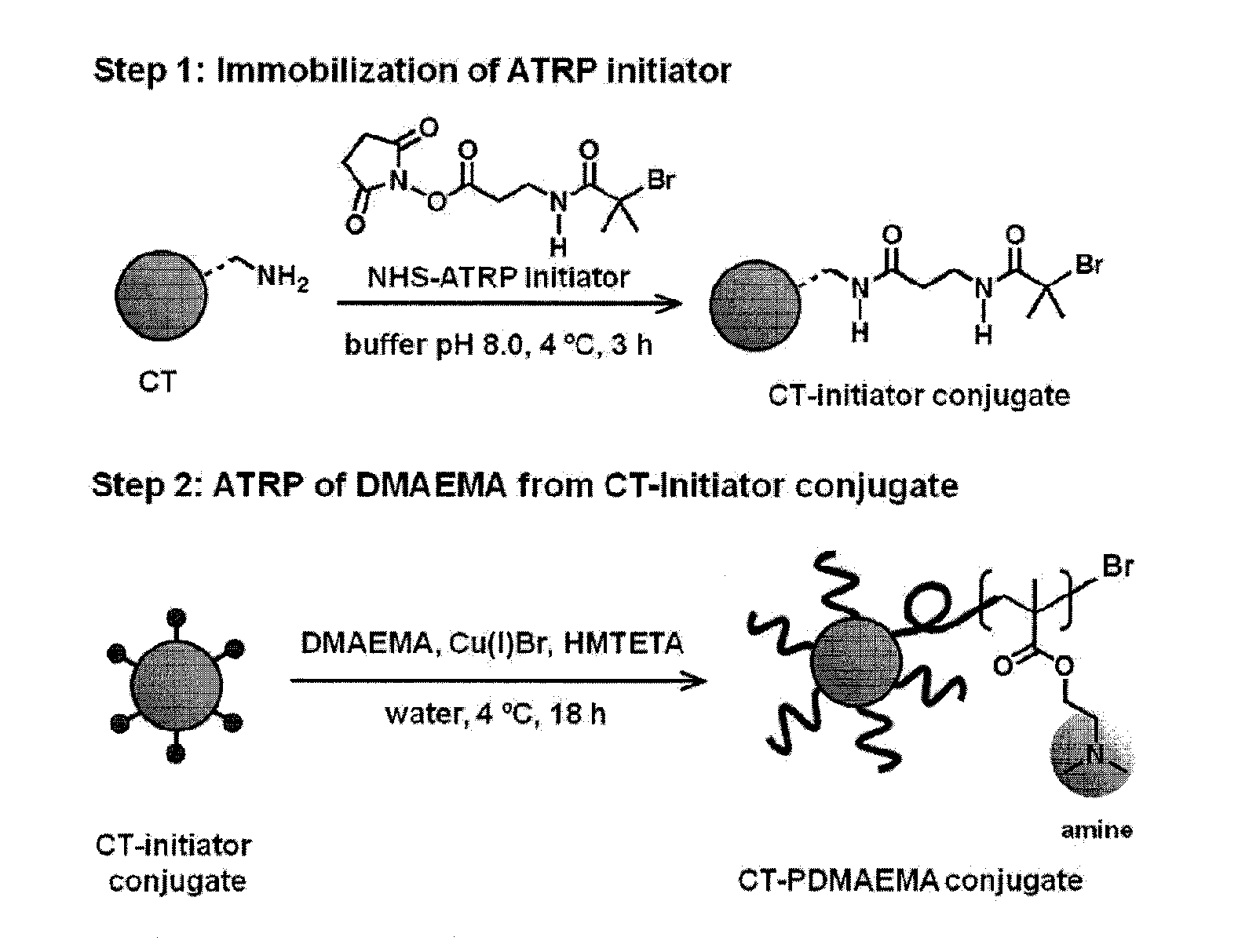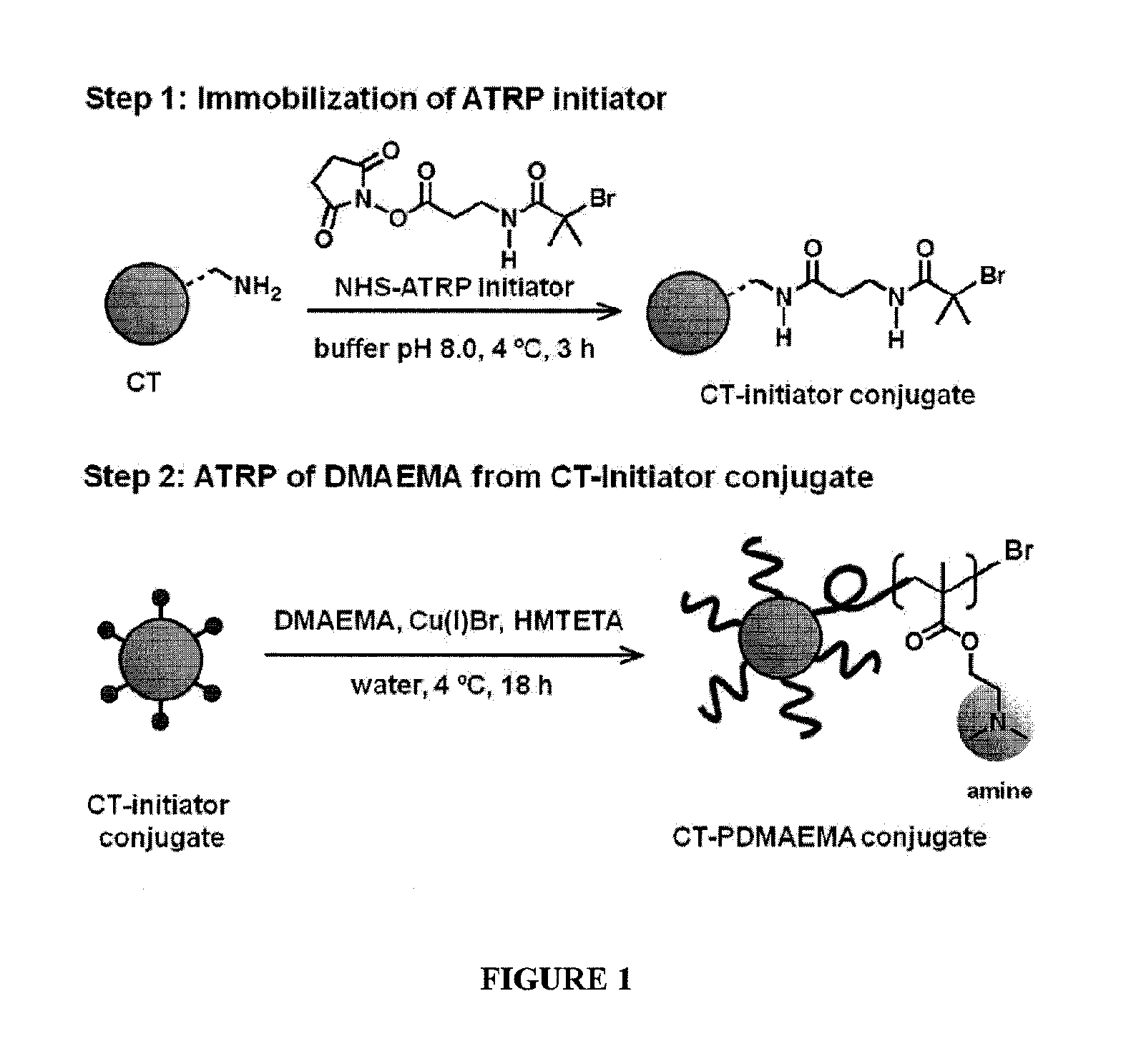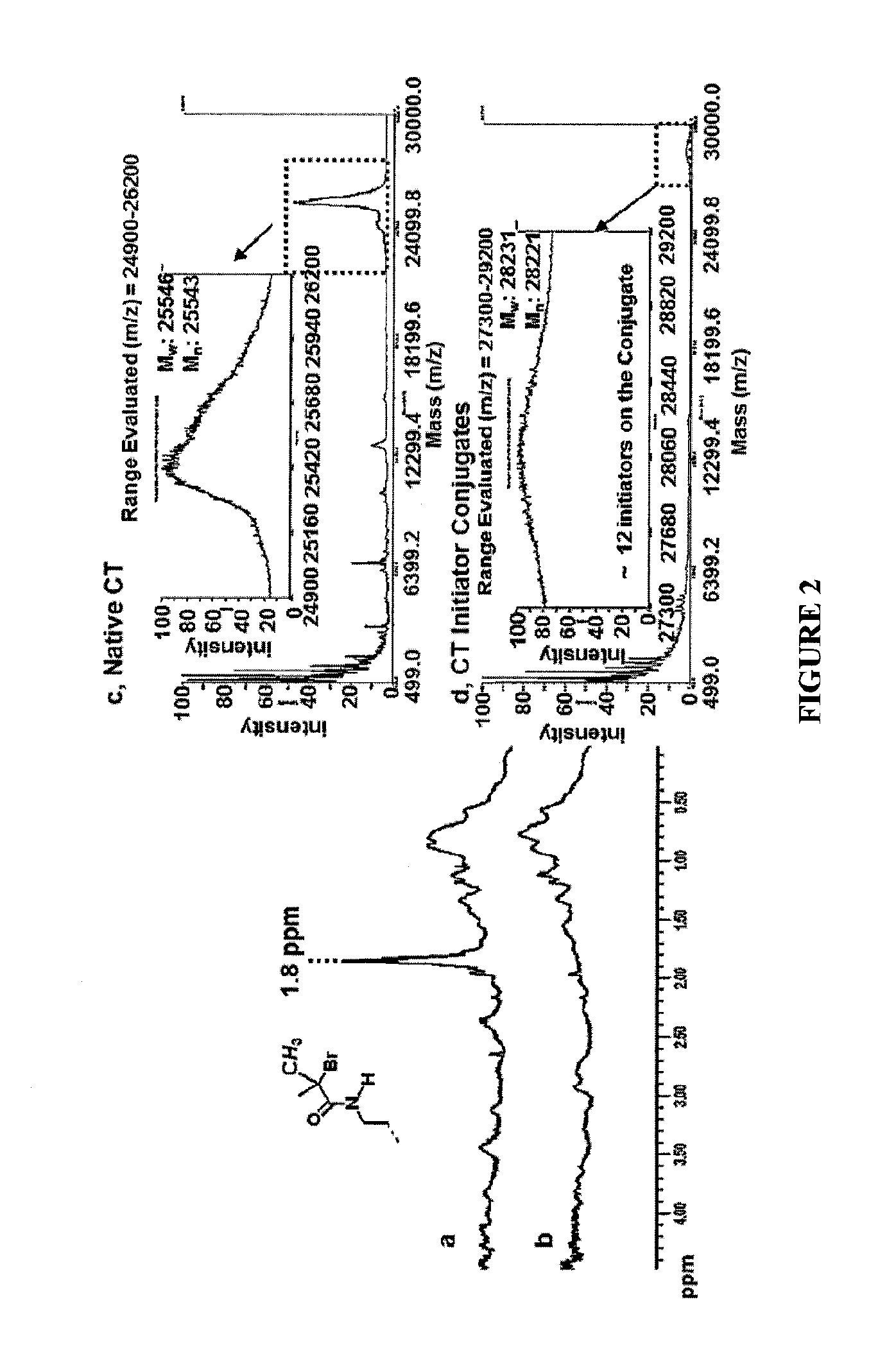POLYMER-BASED PROTEIN ENGINEERING METHODS TO RATIONALLY TUNE ENZYME ACTIVITY, pH-DEPENDENCE AND STABILITY
a technology of ph-dependence and stability, which is applied in the direction of enzyme stabilisation, peptide/protein ingredients, enzymology, etc., can solve the problems of difficult separation of protein-polymer conjugates from unreacted polymers, large excess of polymers often required to overcome steric limitations, and low density of grafting polymers, etc., to achieve rational tailoring of enzyme activity and stability, increase bioactivity, and increase substrate affinity
- Summary
- Abstract
- Description
- Claims
- Application Information
AI Technical Summary
Benefits of technology
Problems solved by technology
Method used
Image
Examples
Embodiment Construction
[0065]The attachment of synthetic polymers to proteins influences activity and stability and offers a means to add novel functions to the protein in a variety of microenvironments. The methods and compositions described herein add significantly to the body of work in this field by allowing a controlled rational approach to the attachment method that permits modification of proteins in a controlled reliable manner. By using monomers to grow polymers that have been determined to be responsive to stimuli to effect a desired property, the protein of interest can be modified with confidence that the polymer protein conjugate will exhibit the desired property, and importantly, will function in the manner for which it was designed in a relevant microenvironment.
[0066]To provide an overall understanding, certain illustrative embodiments will now be described; however, it will be understood by one of ordinary skill in the art that the systems and methods described herein can be adapted and m...
PUM
| Property | Measurement | Unit |
|---|---|---|
| Temperature | aaaaa | aaaaa |
| Fraction | aaaaa | aaaaa |
| Area | aaaaa | aaaaa |
Abstract
Description
Claims
Application Information
 Login to View More
Login to View More - R&D
- Intellectual Property
- Life Sciences
- Materials
- Tech Scout
- Unparalleled Data Quality
- Higher Quality Content
- 60% Fewer Hallucinations
Browse by: Latest US Patents, China's latest patents, Technical Efficacy Thesaurus, Application Domain, Technology Topic, Popular Technical Reports.
© 2025 PatSnap. All rights reserved.Legal|Privacy policy|Modern Slavery Act Transparency Statement|Sitemap|About US| Contact US: help@patsnap.com



